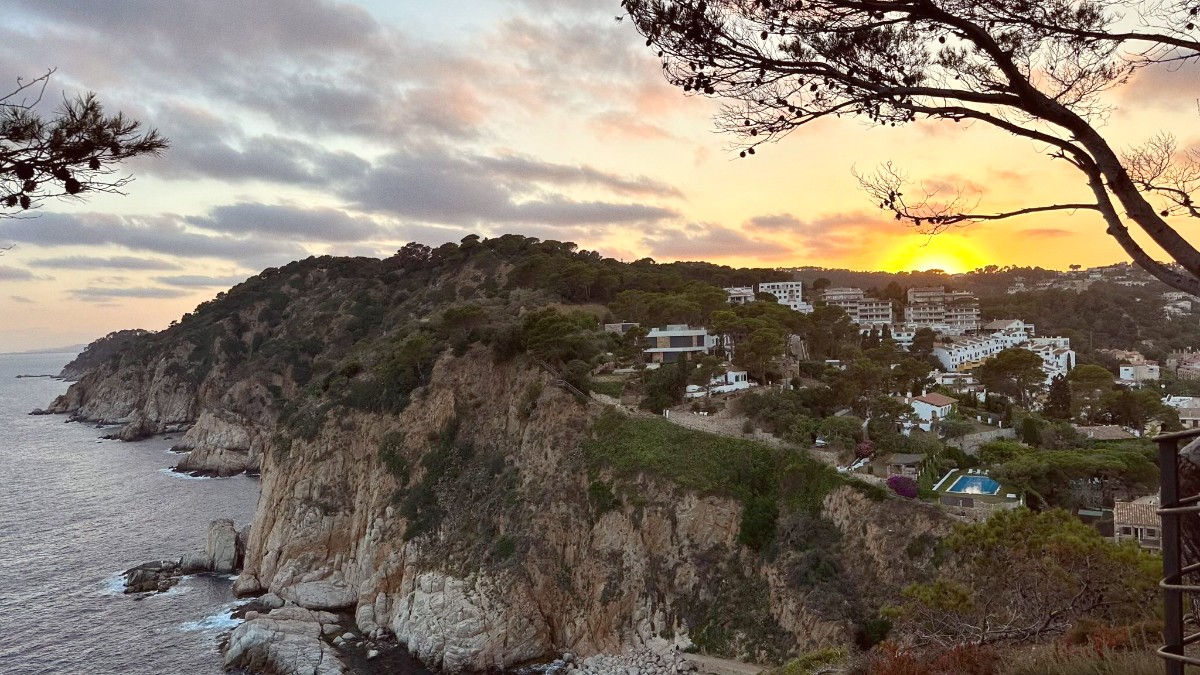
Spain
Seafood: Fresh fish like hake, cod, and sardines are common. Prawns (gambes de Palamós), mussels, clams, and squid also feature prominently. The freshness of the catch allows simple preparation, letting flavors shine. Meat: Pork, often as botifarra sausage, is a staple. Rabbit and lamb also feature in inland dishes. Vegetables: Tomatoes, onions, peppers, aubergine, artichokes, and various mushrooms are widely used. They form the base of many sauces and side dishes.
Staples: Olive oil, garlic, bread (especially pa amb tomàquet), rice, and pasta are used in many preparations. Sauces: Romesco, a rich sauce made from nuts, roasted peppers, and garlic, accompanies many dishes. Allioli, a potent garlic mayonnaise, serves with many dishes.
Lunch (dinar) is typically the main meal of the day, served from 2:00 PM to 4:00 PM. Dinner (sopar) happens late, usually from 9:00 PM to 11:00 PM, especially in summer. Many restaurants close between lunch and dinner service, so plan accordingly.
Tapas are small plates, often eaten standing at a bar or shared among friends. They serve as a social snack rather than a full meal. Bread is usually served with meals and often charged separately. Service can be slower than in some countries, focusing on relaxation and enjoying the meal at a leisurely pace.
Restaurants can be lively and noisy, especially during peak hours, reflecting a social and convivial atmosphere.
While traditionally Valencian, seafood paella is widely available and popular along the coast. It is a rice dish cooked in a wide, shallow pan with saffron, vegetables, and various proteins.
Find it in most coastal restaurants.
A traditional fisherman's stew made with different types of fish, potatoes, garlic, and tomato. Dishes combine seafood and meat, like chicken with lobster or rabbit with prawns, reflecting the region's diverse produce.
Look for this in coastal restaurants.
Large, sweet, red prawns from Palamós, often grilled simply with salt, are a local delicacy. Cured anchovies from L'Escala are renowned for their quality and a local specialty.
Essential tastes of the coast.
The Empordà DO region produces excellent local wines, especially whites. Cava, Catalan sparkling wine, is similar to Champagne and enjoyed for celebrations or as an aperitif.
Vermouth, especially red, is popular as an aperitif. Ratafia, a local liqueur made from herbs and walnuts, is enjoyed as a digestif after meals.
The Costa Brava and Girona province are home to several Michelin-starred restaurants, including the world-renowned El Celler de Can Roca in Girona. Others like Les Cols (Olot), Bo.TiC (Corçà), and Castell de Perelada, deliver high-level culinary experiences.
Abundant throughout the region, offering a variety of Catalan and Spanish cuisine, fresh seafood, and international options. Look for "Menu del Día" for excellent value during lunchtime.
Tapas bars present an excellent option for budget-friendly meals. Bakeries offer pastries and sandwiches. Markets like Mercat del Lleó in Girona or local weekly markets sell fresh produce and prepared foods.
International cuisine is available in larger towns like Girona, Lloret de Mar, and Roses. You find Italian, Asian, and other European cuisines alongside local offerings.
Offers diverse dining experiences.
These restaurants cater to diverse tastes and preferences, frequently located in tourist-heavy areas for easy access.
Locate options easily in main hubs.
Growing availability, especially in larger towns. Use apps like HappyCow.
Awareness is growing. Carry a Translation card for clear communication.
Limited availability outside major cities. Inquire directly.
Google Translate helps for specific needs with staff.
A unique space dedicated to the world of fishing. It features workshops and tasting sessions focused on local fish, an educational and delicious experience.
Discover local fishing traditions.
Many hotels and restaurants in coastal towns feature stunning sea views from their rooftop terraces, making for memorable dining, especially at sunset.
Enjoy panoramic views with your meal.
Beyond dining, the Costa Brava presents various experiences that deepen your understanding of its food culture.
The region's "mar i muntanya" philosophy means a rich variety of flavors, from fresh seafood to robust inland meats and produce.
These become a seasonal delicacy in autumn, appearing in many dishes throughout the region.
This nougat confection is especially popular around Christmas time.
A refreshing non-alcoholic drink made from tiger nuts, typically seasonal in summer.
Catalan crème brûlée, a creamy custard with a caramelized sugar topping.
A must-try dessert.
Small almond cakes, traditionally eaten around All Saints' Day (November).
Seasonal sweet treats.
Visit local producers in inland Empordà for cheese tasting sessions and learn about traditional methods.
Explore vineyards in the Empordà DO region. Many wineries offer tours and tastings.
Learn about olive oil production in the region with visits to local mills, often including tastings of different varieties.
Always check restaurant hours, especially during the off-season, as many establishments may have reduced service or closures.